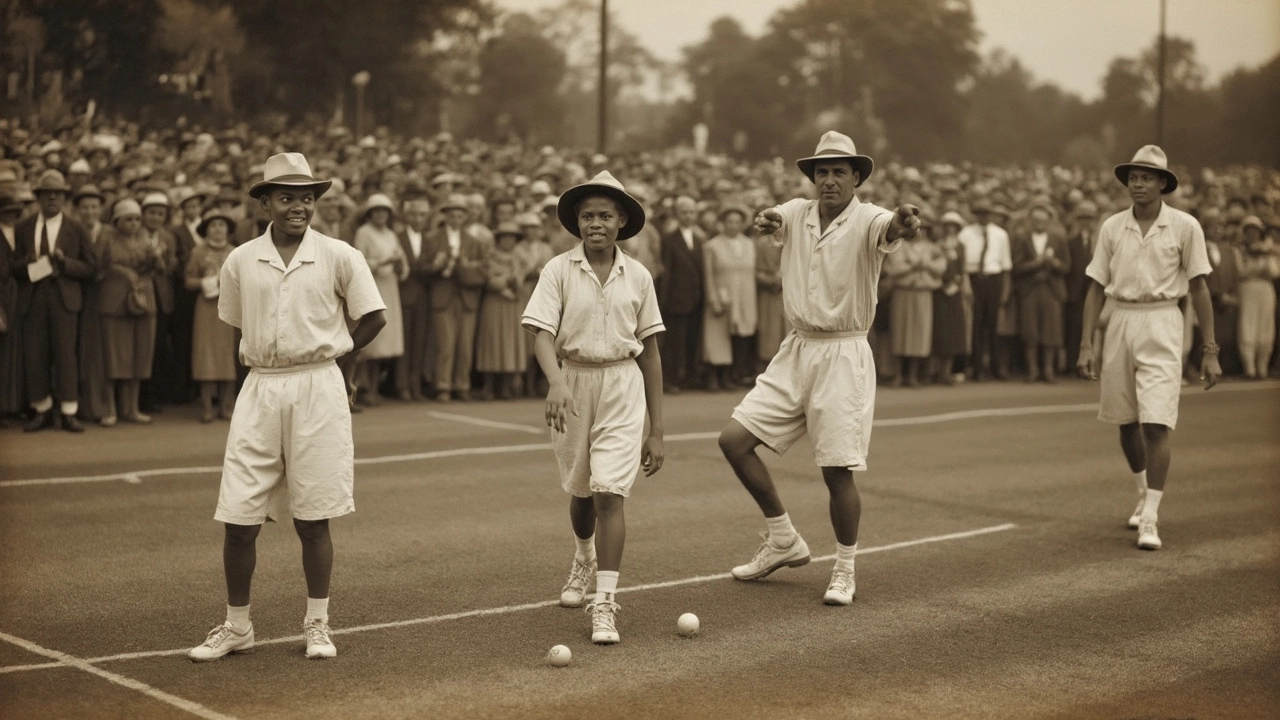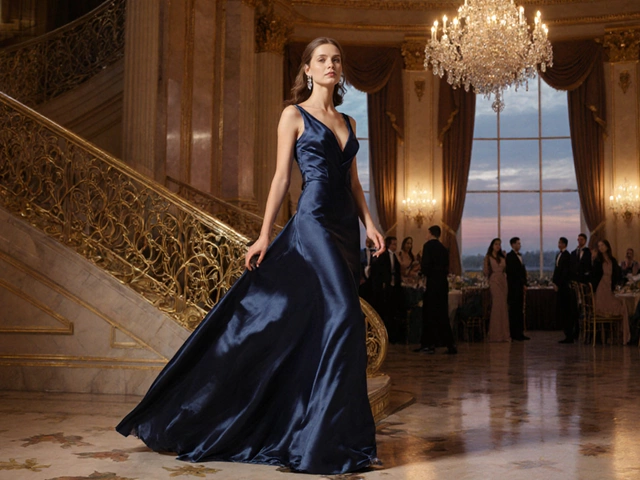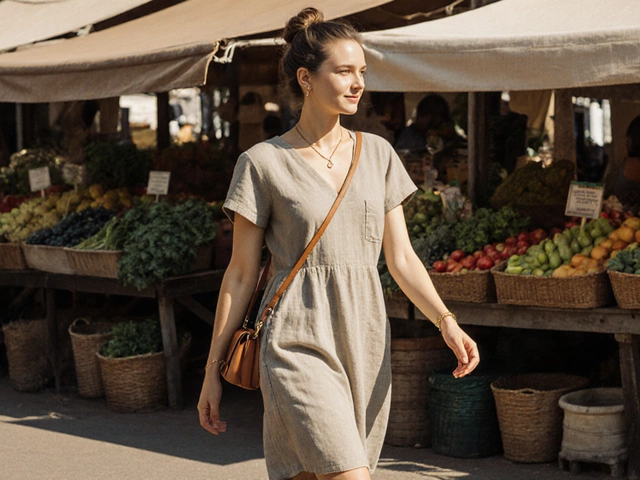You ever wonder why we lump all our gym gear under the tag 'sportswear'? It's not just a catchy name. The term has roots tracing back to when specialized clothing for physical activities became a necessity. Let's dive into how this all started.
In the late 19th and early 20th centuries, as sports gained popularity, so did the need for suitable attire. Instead of squeezing into stiff everyday clothes, athletes required more freedom and comfort. That's when sportswear began to make its mark.
But it's not just about comfort—sportswear had to evolve with function in mind. Modern materials like moisture-wicking fabrics weren't always around. Early sportswear had simpler fabrics, but today it's all about what's practical for performance and recovery. From the lightness of a jersey to the stretch of leggings, the materials matter. And hey, if it looks good too, that's a win!
- The Birth of Sportswear
- Evolution Through Time
- Materials That Matter
- Functionality Meets Fashion
- Choosing the Right Sportswear
The Birth of Sportswear
Way back before the high-tech gear we know today, sportswear wasn’t even a thing. The roots of this clothing revolution can be traced back to the late 19th century. Around this time, sports like tennis, cycling, and rowing started to gain popularity, and with them came the need for more practical clothing.
Initially, people turned their everyday clothes into sports attire. That meant button-up shirts, trousers, and even dresses for women – not exactly the best for moving around. These get-ups were restrictive and uncomfortable, and folks soon realized they needed more flexible options.
Breaking the Norm
One of the first major shifts came from athletes and fashion-forward women who began altering their clothing to meet the demands of their activities. Gals wearing split skirts for tennis or bloomers for cycling set the trend. These adaptations slowly led to a change in mindset about what was acceptable for exercise.
As the 20th century rolled in, the need for clothing specifically designed for sports activities became clearer. This era saw the introduction of specialized garments like knitted jerseys for soccer players and simple one-piece swimsuits for women. These clothes were pioneers in their focus on both function and comfort.
Surfacing the Specialized Gear
By the 1920s and 1930s, sportswear had started to distinguish itself as a separate category in fashion. Brands such as Jantzen and Le Coq Sportif began producing dedicated athletic wear. The popularity of sports in schools and colleges further propelled the demand for this new category.
| Year | Sportswear Milestone |
|---|---|
| 1870s | Introduction of casual clothing for sports |
| 1920s | Rise of brands focused on athletic wear |
| 1930s | Wider adoption in schools and clubs |
Today, what started as a mere convenience has transformed into a thriving industry, blending functionality, performance, and fashion like never before. From gyms to runways, sportswear is now a staple in everyday life. Understanding its origins helps us appreciate how far this essential attire has come.
Evolution Through Time
When you think about how far sportswear has come, it's pretty wild! Imagine trying to run a marathon in wool trousers. Yikes, right? The evolution of sportswear is a journey from heavy materials to the technical fabrics we have today.
Sportswear as we know it began to take shape around the 1920s and 1930s. During this time, designers like Elsa Schiaparelli started to recognize the need for clothing specifically tailored for athletes—think tennis dresses and golf suits that offered more freedom of movement. This was a big departure from the restrictive clothing of prior eras.
Influence of Technology
The mid-20th century saw a technological boost. Synthetic fibers like nylon and polyester started taking over. Why? They were lighter, more durable, and, importantly, allowed more air to pass through. Great for athletes who didn’t want to be weighed down!
With the fitness boom of the 1980s, sportswear got not just practical but fashionable. Thanks to brands like Nike and Adidas, *fitness fashion* became a thing. Leg warmers, neon colors, and high-cut leotards were all the rage. This was when sportswear started inching into casual daily wear territories.
21st Century Developments
Fast forward to today, and we've got sportswear that seems almost miraculous. Moisture-wicking fabrics, compression technology to aid muscle recovery, and even smart clothing that tracks performance metrics. Sportswear is now engineered for optimal performance, whatever the sport.
The evolution is reflected in today’s trends where comfort and style go hand in hand. More people are embracing athleisure—sporty yet stylish apparel for everyday wear. It’s clear that the line between workwear and sportswear continues to blur.
Impact on Everyday Life
Nowadays, sportswear isn't just for athletes. Its comfort factor is a massive hit in our increasingly casual world. This shift means that having a closet full of stylish and versatile sports gear isn't a luxury anymore, but a part of everyday life.
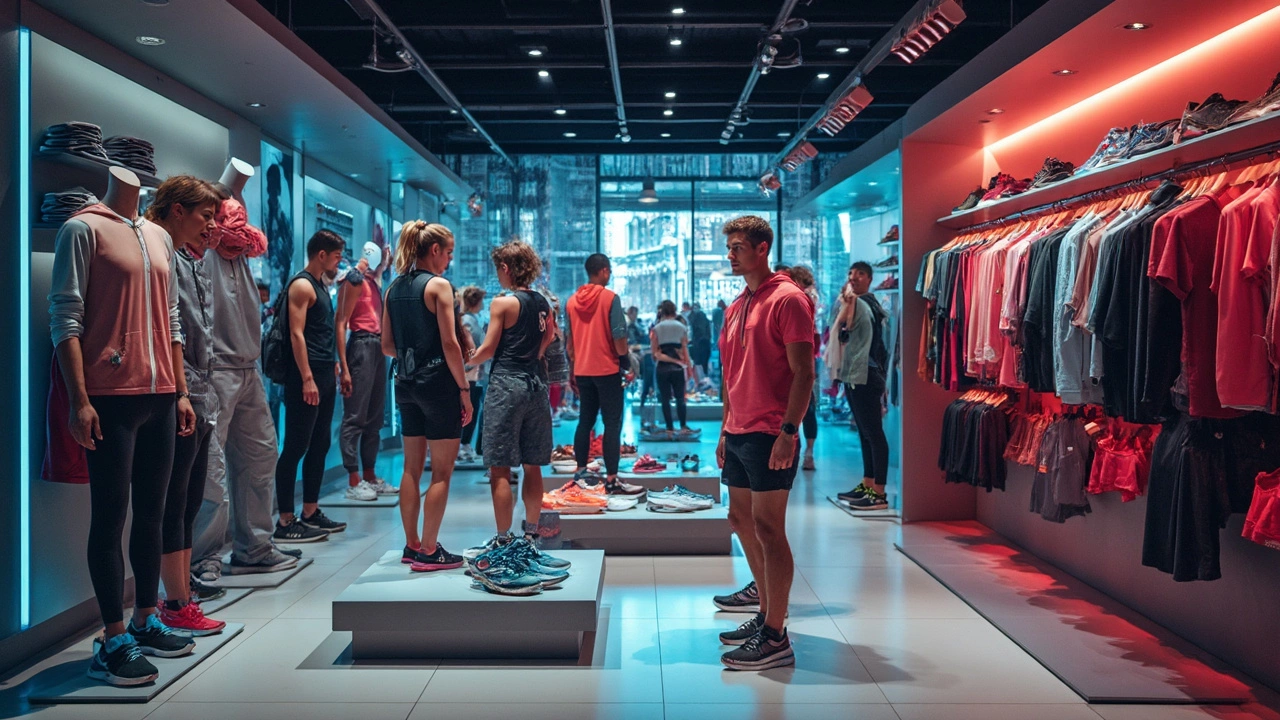
Materials That Matter
When it comes to sportswear, the materials used can make a huge difference—not just in comfort, but in performance too. Whether you’re running a marathon or doing yoga, the right fabric can enhance your workout experience.
Breathability and Moisture-Wicking
Let’s start with breathability. Cotton used to be the go-to choice, but it doesn’t handle sweat very well. Today, most athletic gear is made from synthetic fabrics like polyester and nylon that boast impressive moisture-wicking properties. These guys pull sweat away from your skin, so you stay dry and comfy during intense workouts.
Stretch and Flexibility
Ever tried to squat in jeans? It’s not fun. That's where spandex and elastane come in. These materials add the stretch you need for unrestricted movement, which is crucial for activities like pilates and weightlifting. They snap back into shape, so your gear won't sag or lose its fit.
Durability and Comfort
Sportswear faces more wear and tear than your regular clothes. It's essential for materials to be durable yet soft. Blends of cotton and polyester strike a balance, providing the durability needed without sacrificing comfort. These blends are perfect for casual athletic wear you can rock even outside the gym.
Sustainability Aspect
In today’s eco-conscious world, sustainable materials are gaining ground. Recycled polyester, derived from plastic bottles, is a popular choice in the sportswear industry. It reduces waste and keeps plastic out of landfills while providing the same benefits as virgin polyester.
Choosing the right gear is more than just picking a style. It’s about finding materials that support your activity while keeping you comfortable and performing your best.
Functionality Meets Fashion
Not long ago, wearing sportswear outside the gym might have raised eyebrows. But today? It's a fashion-forward statement. This shift happened when designers saw the potential in merging sportswear's practicality with style.
Let's break it down. Imagine your go-to pair of sneakers. They need to support your feet with cushioning and arch support while looking trendy. Brands are now mixing advanced technology with aesthetics. Take, for instance, moisture-wicking shirts. They keep you dry and cool during intense workouts while offering sleek cuts and colors fit for the runway.
Performance Fabrics
Performance fabrics play a pivotal role in this blend. Materials like spandex, nylon, and polyester dominate the scene because of their stretchy yet durable nature. They allow flexibility for yoga and training and offer comfort for casual wear. Breathability, elasticity, and durability make these fabrics a top choice for athletic wear.
Style and Versatility
But it's not all about function. Once brands realized people craved versatility, fashion elements crept in. Now, graphic prints, color blocking, and sleek silhouettes are common. The result? Outfits that transition from workout sessions to coffee dates seamlessly. Athleisure, the lovechild of athletics and leisure, reflects this popular blend.
Curious about some numbers? Check out this stat: In 2023, the global athleisure market hit $350 billion, emphasizing its growing impact on both fashion and fitness industries.
| Year | Market Value ($ Billion) |
|---|---|
| 2020 | 290 |
| 2023 | 350 |
So, whether you pair a hoodie with jeans or leggings with a tunic, remember, it's not just fashion—it's sportswear embracing dual roles of function and style.
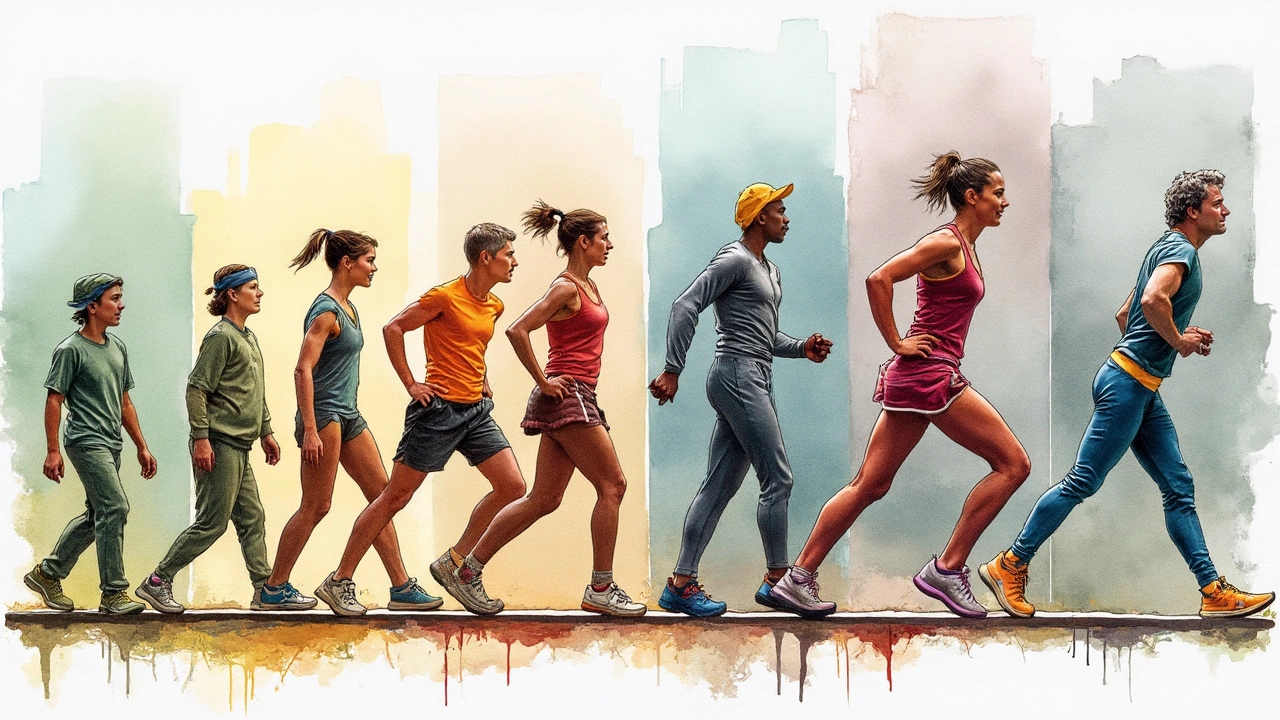
Choosing the Right Sportswear
When it comes to picking out sportswear, it's not a one-size-fits-all kind of thing. The right gear makes a huge difference in performance and comfort. Let's break down what you should look for when assembling your athletic wardrobe.
Know Your Activity
First things first, you need to consider what kind of sport or exercise you're gearing up for. Running requires different attire compared to yoga or weightlifting. For example, a breathable and moisture-wicking shirt is perfect for running because it helps keep sweat away from your skin.
Focus on the Fit
When it comes to clothing for sports, fit is essential. You don’t want anything too tight or too loose. Clothes that are too tight can restrict movement, while baggy clothes might get in the way, especially in activities like cycling or yoga. Look for snug but comfortable fits that allow full range of motion.
Materials Matter
Materials are key when selecting athletic wear. Look for fabrics like polyester or spandex blends. They handle sweat well, dry quickly, and often have added stretch for comfort. Avoid heavy cotton, as it can become soggy and uncomfortable during intense workouts.
Weather-Appropriate Gear
Weather conditions should not be overlooked. For warm weather, choose lightweight and breathable fabrics. In colder climates, layered clothing that includes moisture-wicking base layers and wind-resistant outer layers works wonders.
Additional Features
Check out extra features like pockets for carrying essentials, reflective elements for night runs, or even anti-chafing seams. These small details can greatly enhance your exercise experience.
Investing in the right sportswear isn't just about looking good; it boosts your workout efficiency and comfort. With these tips in mind, you can confidently pick gear that complements your activities and keeps you motivated. Happy sweating!
